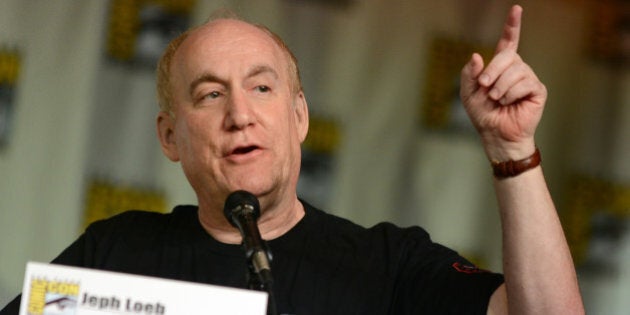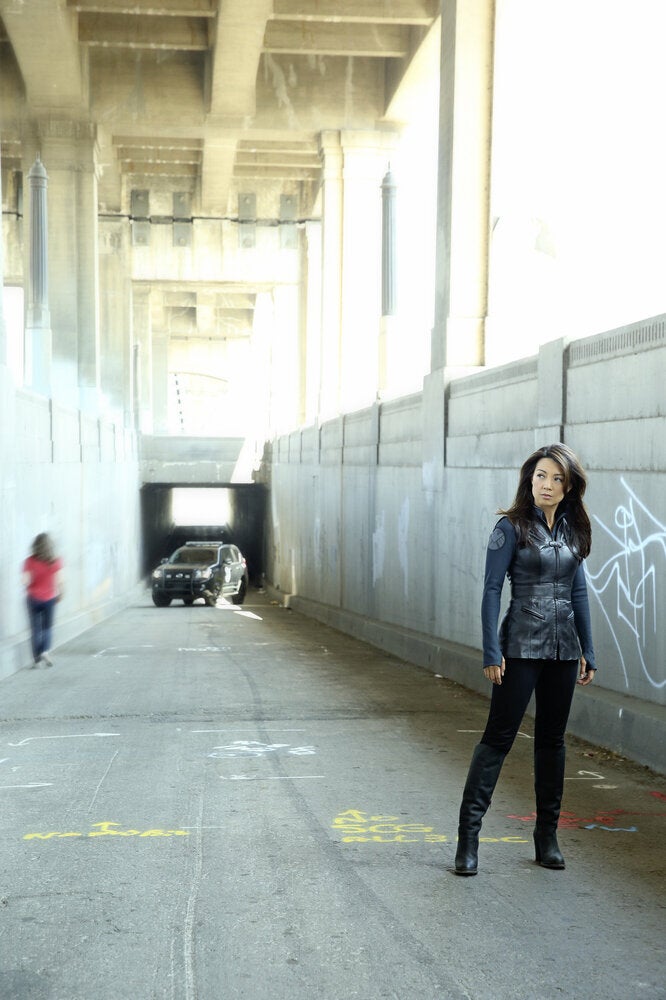
When Marvel announced that Jeph Loeb would be heading up their newly created television division in 2010, fans knew they were in good hands. Not only had Loeb produced some of the seminal works of recent comic book history -- "Batman: The Long Halloween," "Superman For All Seasons," "Daredevil: Yellow," "Hulk: Grey" -- but he has also had an extensive career writing shows and movies beloved by geeks everywhere: "Smallville," "Lost," "Heroes" and even the original "Teen Wolf" film.
On the heels of massive hits like "Marvel Agents Of S.H.I.E.L.D." and a Netflix partnership that could see heroes like Daredevil finally make it to the small-screen in a live-action form, it seems the fans were right.
HuffPost Canada TV caught up with him to talk about Marvel's latest direct-to-TV film "Iron Man & Hulk: Heroes United" and try to get him to spill the beans on the secrets to Marvel's string of film and television successes.
"Iron Man & Hulk: Heroes United" is the first direct-to-TV Marvel feature that's all CGI. Is there a particular reason Marvel went in that direction?
Jeph Loeb: Well, it's not just CGI. The simple answer is, we wanted a different look from the traditional animation we've been doing for our Disney XD/Teletoon shows. These would be "Ultimate Spider-Man," "Hulk: Agents Of S.M.A.S.H." and "Marvel Avengers Assemble." This traditional, 2-D, action-adventure animation, we happen to think is the best that's being done right now. We knew that when we wanted to go into the original DTV space, we wanted something that was incredibly unique and wouldn't feel like the audience was watching something they could get on television, so that was the first step.
It actually isn'tt traditional CG -- this is a hybrid. One of the challenges of CG -- and no one does it better than the folks at Pixar and Walt Disney Studios -- is making sure that the faces have a certain kind of life to them. I think you've seen some CG where they almost look like mannequins, and there's a certain kind of emptiness to the eyes in particular. Eric Radomski, our head of production, spear-headed a unique kind of groundbreaking technique that's a combination of CG with a 2-D wrap, so that we're actually animating the facial features and expressions on top of what the computer is doing. There's a real light to it and, at the same time, you get the ability to have the kind of size and weight and excitement that you can only get with computer graphics.
It almost looked like motion capture.
It does have that feel to it. We're somewhere in between traditional animation and actual live-action. It's particularly helpful when you're doing something like The Hulk, who's a character that's so much larger than life and you want to make sure that you're capturing the expression. Iron Man's armour is much more traditional CG, so you can emulate the kind of action you see in the movies and give that epic feel to it. Metal is something that's easier to animate with a computer, but when you start getting into flesh, faces and things like that, it gets more difficult.
You went with the "smart" version of the Hulk here -- the one that speaks in full sentences. Is that because you needed the interplay between him and Iron Man, as this is essentially a buddy movie?
It very much is a buddy movie, and the part that was odd about this was when we were first asked by Walt Disney Home Video to come up with an original movie for DTV, they asked us to think about who our most popular characters were. That was very easy for us, as we'd just come off the tremendous success of "The Avengers." Personally, I think the breakout star of that movie was Mark Ruffalo's performance as The Hulk, and when you pair him with what was going on with Robert Downey Jr.'s interpretation of Iron Man, you had something that was really exciting and dynamic between them. It was a fun interplay between them. What we did was, we went to the most likely and, in some ways, surprising people. We went to kids and asked them who their favourite Avengers were and who they wanted to see teamed up.
We learned something, that as adults probably seems obvious, but the way it was explained to us by kids was so exciting. They wanted to see Iron Man and Hulk teamed up because of the way the two of them solved problems. Iron Man looks at things and wants to solve them with tech, so he's surrounded himself with state-of-the-art armour and incredible tech that only Tony Stark can create. But, you pair him with The Hulk, who has none of that, who is basically all about smashing and has no weapons whatsoever, although, we get to play a little bit with that and have some fun with it, and it really becomes the man from the future and the man from the past getting together to solve a problem that is very current.
Switching to your live-action show for a moment, is there a reason why "Marvel's Agents of S.H.I.E.L.D." hasn't mined the Marvel Universe for character appearances as much as DC has mined their own universe for "Arrow"?
Stay tuned, there's a plan.
Also, can you tell us anything about the Netflix deal and how excited you are to be bringing Daredevil, Luke Cage, Iron Fist, Jessica Jones and The Defenders to TV?
I can't comment on that yet. All I can tell you is we're very excited about our partnership with Netflix. That's all I can say right now.
Your position as head of Marvel Television seems like the perfect marriage between your life as a comic book writer and your life as a screenwriter for film and television, but what do you love about it?
I get to work with a lot of amazingly talented people. When I was first asked to come to Marvel and head up the television division, which didn't exist at that point, what I thought I brought to it was an incredible love of all things Marvel. Obviously, I've been writing comics for a long time and enjoy the genre quite a bit. At the same time, I have this other career writing television and movies, but both these careers were always on two separate tracks of my brain.
Marvel asked me if I could take the peanut butter side of my head and the chocolate side of my head and mix them together in running this division. Knock on wood, we've had a tremendous amount of success and I absolutely give all of that to the people we've hired, whether that's Paul Dini, Henry Gilroy and the Man of Action guys on the animation side, or it's Joss Whedon, Jeffery Bell, Maurissa Tancharoen and Jed Whedon on the live-action side. It really does come down to the people who are telling the stories. Marvel has always been a company that's about telling stories and we follow that in our division. We try to hire the best writers and people who love the material and from there, work with the best production people that we can in order to deliver something that's very cool and, at the same time, has a very epic feel to it with elements of the human spirit and just a dose of humour.
The people you mention above are people who know the comics like the back of their hand. Marvel always seems to stay true to the spirit of the comics no matter what. Do you think it's important to have guys who grew up reading the comics running your other entertainment initatives?
I think it's important that the people telling the stories understand Marvel. Whether they are true died-in-the-wool geeks or whether they have just a real affinity for this kind of material, that's what we look for. Really, much more than anything else, it's understanding the balance that makes Marvel incredibly unique. We're not storytellers that lean on the cape and the cowl. It's always much more interesting to tell the story of Tony Stark, a man who literally and metaphorically had no heart, so he built one and became a better man because of it. You're rooting for Iron Man because Tony is inside that metal case. You need to be involved with the person, not the hero, and then when they become the hero that's what makes the character absolutely fascinating.
Peter Parker and Steve Rogers are just some of the people that you're invested in when we start telling Marvel stories. When we start talking to the incredible talent and writers that we've brought in, whether it's on the animation side or the live-action side, that's where we start. Who are these people? What do they want? What are their dreams? What's keeping them from getting those dreams? Then, once you're invested in them, let's see what they can do when they're ordinary people who are thrown into an extraordinary situation -- that's Marvel.
